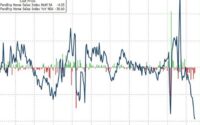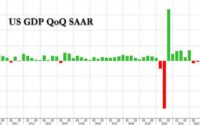How new faces on a key Fed committee could change the calculus for rate cuts in 2024
The Fed has some new faces on its interest rate setting committee in 2024. But analysts are split about whether that will change the balance of power between hawks and doves — and thus the direction of monetary policy.
The change is happening because of how the central bank divides up votes on its Federal Open Market Committee, a body that has the final say on whether rates go up or down.
Every year four of the 12 seats change hands as part of a power-sharing agreement with the quasi-public regional Fed banks based around the country. This year those four spots go to regional Fed presidents in Cleveland, Richmond, Atlanta, and San Francisco — Loretta Mester, Tom Barkin, Raphael Bostic, and Mary Daly.
Departing the committee are Austan Goolsbee, Patrick Harker, Neel Kashkari, and Lorie Logan — the regional Fed presidents from Chicago, Philadelphia, Minneapolis, and Dallas who had votes in 2023.
The actions of this new FOMC will be under intense scrutiny this year as Wall Street expects six rate cuts beginning in March.
In 2023 the FOMC raised rates to a 22-year high, before holding them steady during the second half of the year. Fed officials project a median of three cuts in 2024.
Read more: What the Fed rate-hike pause means for bank accounts, CDs, loans, and credit cards
The majority of the FOMC is still intact from 2023 since it includes eight permanent seats belonging to the president of the Federal Reserve Bank of New York (currently John Williams) and the seven Fed governors in Washington who are nominated by the president.
But the four new members could make the FOMC marginally more dovish, according to Ernst & Young chief economist Gregory Daco, to use a bit of Fed jargon that describes members who are more open to cutting rates as a way of boosting the economy.
Bostic and Daly, he said, fit that dovish description, while Barkin can be more neutral in his stance.
Bostic has recently predicted cuts in the second half of 2024, while Daly acknowledged publicly that it is appropriate to begin the rate cut conversation — an admission that most of her colleagues have not been willing to make openly.
Barkin has said he wants conviction that inflation is coming down to the Fed’s 2% target before considering rate cuts.
One of the new four — Mester — is considered by Daco to be more of a hawk, another bit of Fed jargon that describes officials who lean toward higher rates as a way of slowing inflation.
Mester may have demonstrated this recently when she said the markets had gotten “a little bit ahead” of the Fed by assuming that cuts were coming soon.
However, Mester’s seat could still turn dovish by the second half of the year due to the Fed’s mandatory age and length-of-service policies.
Fed rules require regional bank presidents to serve a 10-year term if they were appointed after turning 55, a situation that applies to Mester and will result in her exit in mid-2024.
When she leaves, a pre-designated alternate will vote in her place. In 2024 that person is Goolsbee of the Chicago Fed, who was dovish with some of his public comments last year. He has said repeatedly that the Fed was on the “golden path” to curbing inflation without causing a recession.
Not all analysts agree that the new members will tilt the committee in a dovish direction, however.
Andrew Patterson, senior international economist for Vanguard, predicted the addition of Daly and Mester and the exit of Harker and Goolsbee will likely leave the committee more hawkish than dovish.
That’s a positive, he said, because it would help the committee avoid preemptive cuts.
“We believe cutting policy rates early in an attempt to avoid broader macro weakness would lead to a reacceleration in inflation and the need to recommence hikes later, ultimately leading to recession,” said Patterson.
Matthew Luzzetti, chief US economist for Deutsche Bank Securities, has a third view. He said the turnover in Fed voters will end up netting out close to the same on the question of hawks vs. doves.
Luzzetti, however, wondered whether the committee can maintain the same cohesion it had when it was raising rates.
“As FOMC decisions turn to when to cut rates over the year ahead — a more contentious decision — it would not be surprising to observe a greater degree of disagreement across officials and voters,” said Luzzetti.
A ‘topic of discussion’
Fed officials agreed during their last policy meeting of 2023 that rates were likely at their peak, and almost all of them predicted lower rates “would be appropriate by the end of 2024,” according to minutes from that Dec. 13 meeting released by the central bank on Wednesday.
But there wasn’t a discussion of exactly when those cuts could begin, and participants kept the option of higher rates on the table if inflation were to heat up again.
In a press conference that followed that last meeting, Fed Chair Jerome Powell made it clear that central bank officials had started the conversation of when to dial back policy restraints, calling it a “topic of discussion” at the December meeting and “a topic for us looking ahead.”
The markets rallied on Powell’s comments, cheering a return to cuts. But in subsequent days, several Fed officials tried to walk back whether cuts would actually happen and how quickly.
Williams, one of the FOMC’s permanent voters, said it was “premature” to talk about a rate cut in March.
Click here for in-depth analysis of the latest stock market news and events moving stock prices.
Read the latest financial and business news from Yahoo Finance
[ad_2]
Source link


